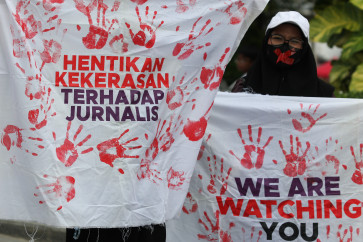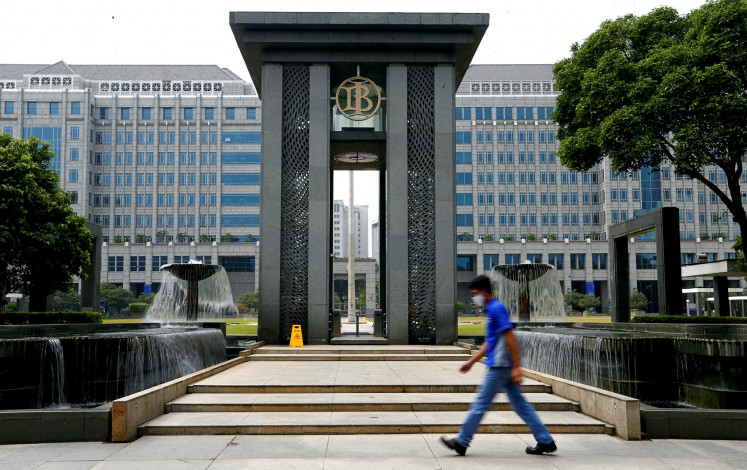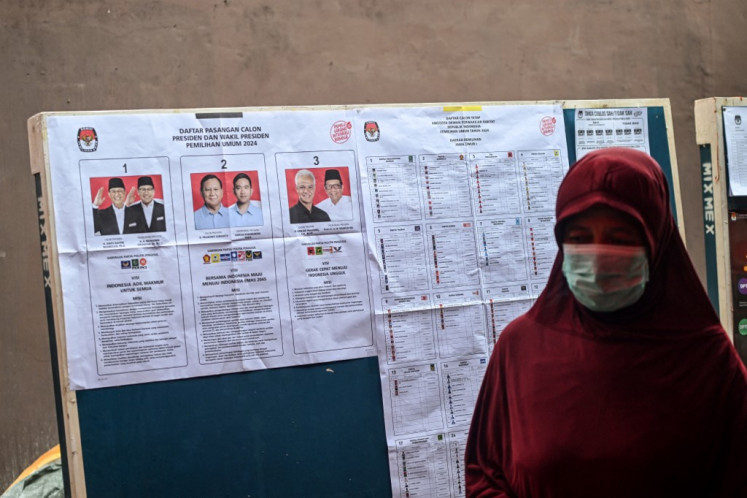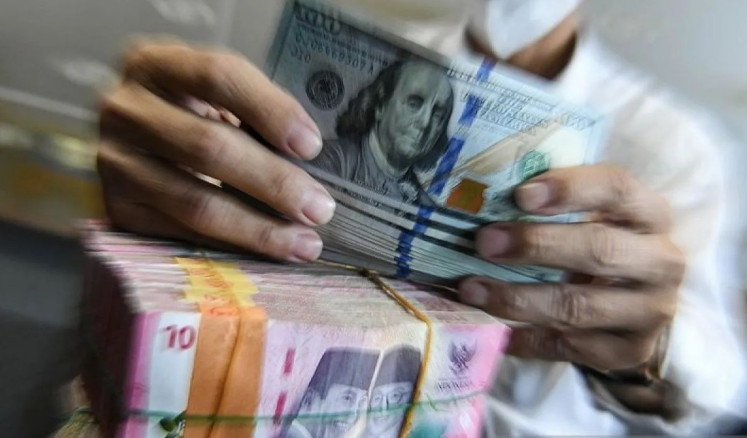Popular Reads
Top Results
Can't find what you're looking for?
View all search resultsPopular Reads
Top Results
Can't find what you're looking for?
View all search resultsFrom religion to religiosity
Very recently, the newly appointed head of the Agency for Pancasila Ideology Education (BPIB), Yudian Wahyudi ,drew the ire of some elements of the Indonesian public for saying in an interview that religion was the enemy of the state ideology, Pancasila
Change text size
Gift Premium Articles
to Anyone
V
ery recently, the newly appointed head of the Agency for Pancasila Ideology Education (BPIB), Yudian Wahyudi ,drew the ire of some elements of the Indonesian public for saying in an interview that religion was the enemy of the state ideology, Pancasila.
“Religion” can indeed be “death-dealing” and used to perpetuate certain corrupt practices. In fact, Wilfred C. Smith reckoned that the current understanding of “religion” is insufficient, since it has failed to encapsulate “immensely diverse, fluid and subtle data of religious life”.
Therefore, in The Meaning and End of Religion, Smith argues for a whole new “concept of apparatus or theoretical framework” of looking at “religion”, which is “more rewardingly and more truly based on the historical cumulative tradition and the personal faith of men and women”.
When one looks very closely at the history of Christianity and mission, particularly from the second century onward, Smith’s assertion could not have been more poignant.
From Antioch, Christianity spread eastward to Persia, where it reached places like Edessa, Arbela, and later on Armenia. Furthermore, Christianity reached northern Afghanistan and India and traveled all the way to the Middle Kingdom (China).
Certainly, the spread of mission in this period could be linked to the apostolic zeal of the early Church. But professors Stephen Bevans and Roger Schroeder attributed this vitality of mission in the east at that time of history to “ordinary Christians” like merchants, migrants, enslaved people and itinerant missionaries or wandering/traveling ascetics.
These “ordinary Christians” assumed a very important role in, what Michael Green calls, “gossiping the gospel”.
By doing this, and coupled with their exemplary day-to-day life — wherein Christians showed genuine love and care for one another — these ordinary Christians and itinerant ascetics lived out their baptism and at the same time contributed constructively to the spread as well as the growth of the mission of the millennium in the east.
One wonders what would have happened if Christianity had continued to do mission in this same fashion. Surely, the Christian “religion” continues to survive even up until this moment. Unfortunately, it lost that enchantment it once wielded in the second and third centuries.
Part of the problem is, as Ibram X. Kendi so eloquently argued in his book Stamped from the Beginning: the Definitive History of Racist Ideas in America, Christianity has succumbed to a “religion” that blatantly utilized verses of the Holy Scripture to justify the enslavement of Africans from the 16th century onward.
This is exacerbated by mass production of racist ideas that ultimately justified and perpetuated racist practices and policies, which, ironically, were spearheaded by Christian intelligentsia.
Furthermore, Leanne Betasamosake Simpson argued in her book As We Have Always Done: Indigenous Freedom through Radical Resistance, that the Christian religion introduced by male white supremacists was deeply laden with triumphalism and colonialism.
Therefore, Simpson argued for a new and fresh paradigm of social, political, economic and cultural resurgence based on her native Michi Saagiig Nishnaabeg wisdom and religiosity. She proposed Kwe as a “resurgent method.” Although Kwe can be translated as “Woman,” it has taken on a wholly different meaning, since it “recognizes a spectrum of gender expression”.
Furthermore, Simpson emphasised the nature of Kwe as non-commodity, non-conforming and nonessential, which does not “confirm to the rigidity of colonial gender binary”.
Such views enabled her to see her body and her life as part of her research that raptures radically from conventional research that she reckons relies heavily on academic reference.
For Simpson, her life as a “Kwe”, knowledge and wisdom that have been present and well preserved in Nishnaabeg from time immemorial, provided her with the necessary tools to deconstruct ideas perverted by “religion”, colonialism, gender violence, capitalism and heteropatriarchy.
Smith sees religion as inutile and calls for a redefinition of the term. Kendi’s studies has shown how religion can be abused by those who wish to hold on to their corrupt power, practices and abuses. Simpson proposes an alternative way of defining religion based on her native culture and spirituality.
Whether one likes it or not, Christianity reached Indonesia along with European colonizers, which can prove to be a “historical burden” for many Indonesian Christians.
Sure, there were European missionary men and women who dedicated their lives to the poor, the sick and the marginalized Indonesians.
Furthermore, the first native Indonesian bishop, Jesuit Mgr. Albertus Soegijapranata, famously called for Catholics to be “100 percent Catholics, 100 percent Indonesians”, a call for Indonesian Catholics to be deeply rooted in Indonesia.
Today, Christians, especially Indonesian Catholics, are still trying to give fresh breath to Soegijapranata’s call for the Indonesianization of Catholicism. Perhaps, this is best displayed in the archdiocese of Jakarta.
Under the leadership of its archbishop, Cardinal Ignatius Suharyo, the diocese incorporates Pancasila’s every sila (principle) into its annual Lenten themes.
This year, for instance, which is the fifth year of such movement, the faithful are to reflect on the fifth sila under the theme of “Kita Adil, Bangsa Sejahtera” which calls for every faithful to be just in order to create a more prosperous Indonesia.
Indeed, religion can become “death-dealing” especially when it’s used as a tool to perpetuate power and control, as Kendi and Simpson have argued.
Certainly, that happened to Christianity in a particular geographical context and history. Hence, the need for its redefinition, as Smith has called for.
The good news is, religiosity can be “life-giving”, especially when it helps human beings go beyond their institutionalised religion and be a blessing to others, which every Catholic Jakartan is trying to realise.
Hopefully, this small but significant effort can spark a ray of hope in building a more ‘just’ and “prosperous” Indonesia that’s deeply rooted in one’s religious beliefs and based on long cherished Indonesian values enshrined in Pancasila.
______
Catholic priest from the Congregation of the Immaculate Heart of Mary (CICM)










